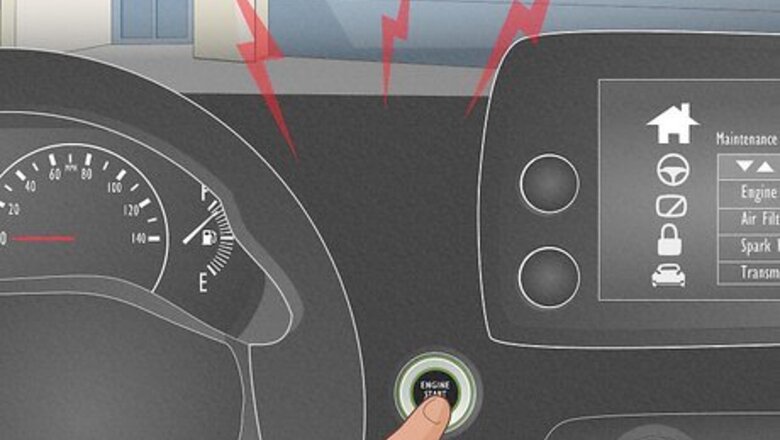
views
- Signs of a dead or dying battery include difficulty starting your car, dim headlights, a battery light on your dashboard, and a battery that’s old, leaking, corroded, or swollen.
- Jumpstart your car to recharge a dead battery. If it still won’t start or dies soon after starting, replace the battery or have a mechanic check the electrical system.
- To help your battery last longer, always turn off lights and electronics when you park. Get the battery maintained regularly and replace it if it’s more than 5 years old.
Signs Your Car’s Battery is Dead or Dying
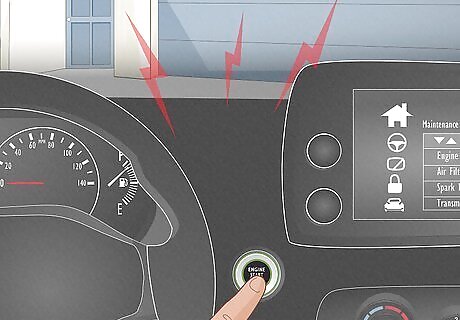
Your car won’t start or takes longer to start than usual. If your car doesn't start or the engine "cranks" or "whirs" for several seconds after you turn the key or press the ignition button, it’s a sign that your battery isn’t producing enough power to start the engine. This is called a “slow crank,” and is a common sign of a dying battery. If your car won’t start, the battery may be completely dead. If your car often cranks slowly when the outside temperature is above 20°F (-6.7°C), your battery may be dying. Slow cranking is normal when temperatures drop below 20°F (-6.7°C). If you live in a cold climate, don’t be alarmed if your car takes a bit longer to start during wintertime.
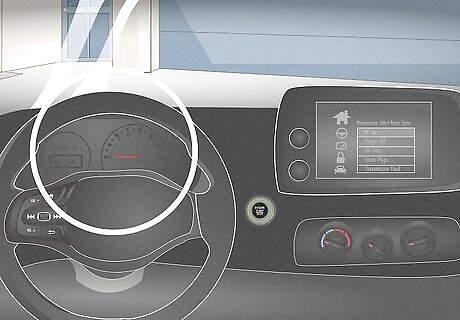
Your car’s lights, dashboard, and electronics malfunction. When you try to start your car, the headlights and dome lights may appear dim. The dashboard’s backlight might also look dimmer than usual. Your windows might roll up very slowly, and the radio and clock might flicker or not turn on at all. In some cases, your car’s lights and electronics may function normally, but the battery may not produce enough power to start the engine.

Your car’s battery light is on. If the battery light on your dashboard turns on, your car’s electrical system isn’t working correctly. This could be caused by a dying battery that’s no longer producing enough power. If you see this light and you’ve been having trouble starting your car, your battery may need to be replaced. A battery warning light can also indicate a bad alternator, corroded wires, or other electrical issues not directly related to the battery. If you replace the battery and the battery warning light remains on, your car may have other electrical problems.
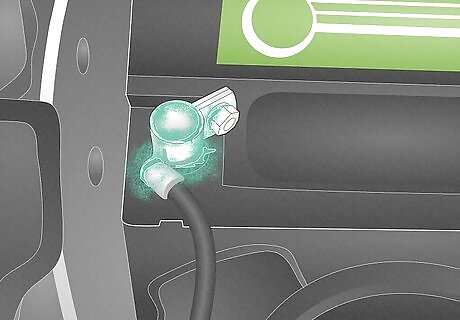
Your battery has a blue-green substance on it, indicating corrosion. Corrosion occurs when batteries leak, causing their materials to oxidize and change color. You might see corrosion on the battery’s terminals (the red and black posts marked “+” and “-”), or anywhere on the battery’s surface. You may also notice visible leaking and a stinky “rotten egg smell,” caused by sulfuric acid. Corrosion can interfere with electrical connections throughout your car.
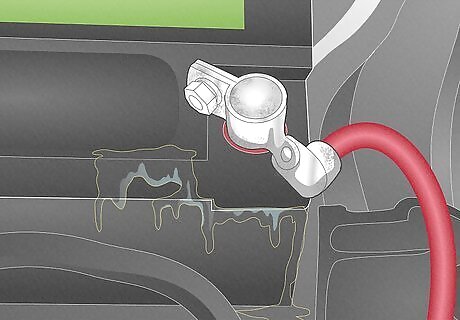
Your battery is leaking fluid. If you see liquid dripping from the battery, or pooling on the ground under the battery when you park your car, the battery may have a leak. You may also notice a stinky, “rotten egg smell” coming from the battery. This is caused by sulfuric acid leaking out. A leaking battery is dangerous since the fluid contains sulfuric acid. Avoid touching a leaking battery to prevent burns, and keep children and pets away. Leaking batteries sometimes produce smoke.
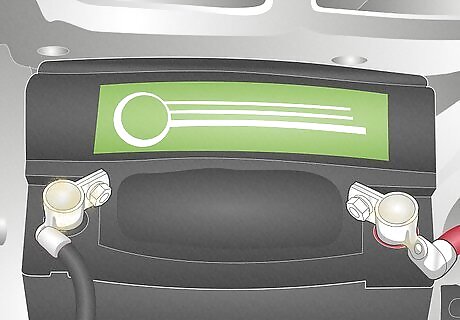
Your battery looks puffy, swollen, or cracked. The sides may bulge or the top may look “popped out.” This occurs when the battery gets overcharged by your car’s alternator. Swollen car batteries have reached the end of their useful lives and can’t produce electricity reliably. Swollen batteries may also leak, smell like rotten eggs, and produce smoke.

Your battery is more than 5 years old. Car batteries last between 5-7 years, depending on your car, the local climate, and the type of battery you have. All batteries produce less power as they age. But after 5 years, most batteries will be too old and won’t produce enough power to start your car and keep it running. Most batteries have their manufacturing written on the top of the battery case. If you
Troubleshooting & Replacing a Dead Battery

Jumpstart your car to recharge a dead battery. Sometimes, a good battery will die when you leave your car’s lights, radio, or other electronics on for several hours while the engine is off. Jumpstart your car to get the engine running, then let the alternator recharge your battery for 10-15 minutes. If jumping doesn’t work, you may need to have the battery or alternator replaced. To jumpstart your car with jumper cables, park another car face-to-face with your car. Open both engine compartments and locate the batteries on each car. Connect the red jumper cable to your car battery’s positive (red) terminal, then connect the other end of the red cable to the other car’s battery’s positive terminal. Connect the black jumper cable to the other car’s negative (black) terminal, then connect the other end of the black cable to a piece of bare metal far from the battery, or to a specific grounding point indicated in the car’s owner’s manual (either will work). Start the other car, then start your car and remove the cables from both batteries in the reverse order that you attached them. Leave your car running for 5-10 minutes to recharge your battery.
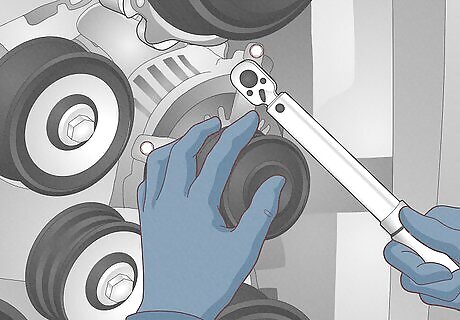
Get your car’s electronics serviced if jumpstarting doesn’t work. If your car won’t jumpstart, or if it dies again after jumpstarting, have a mechanic service the electrical system. You may need a new battery, a new alternator, or both. Your mechanic may also fix wiring issues or remove corrosion caused by battery leaks. Your alternator recharges your car’s battery and powers other electronics, such as the headlights. If your alternator is malfunctioning, your car won’t run correctly, even with a good battery. Your spark plugs or other engine components may also need to be replaced.
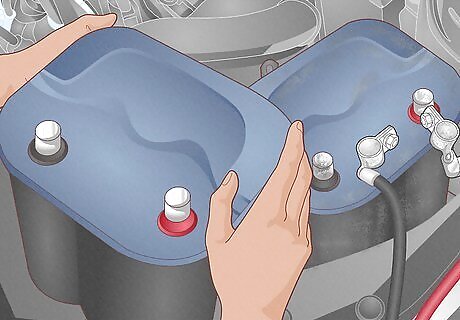
Get a new battery that matches the old battery if you need to replace it. Buy a 12V car battery with the same BCI number and terminal positions as the old battery. The BCI number is printed on the top of the battery case and determines the battery’s size and shape. The terminal position refers to the locations of metal posts where the cables connect to the battery. If possible, opt for the following options as well: Buy a battery with at least 850 “cold cranking amps” if you live in a cold climate. This helps your car start more easily in freezing temperatures. Choose a battery with a reserve capacity of at least 150 minutes. This allows your battery to deliver a minimum amount of power for at least 150 minutes before dying. Consider buying a high-tech “Absorbed Glass Mat” (AGM) battery instead of a traditional lead-acid battery. AGMs cost more, but they charge faster, never leak, and last longer than lead-acid batteries. Buy a battery with a long warranty to get it replaced for free if it malfunctions. Battery warranties range from 3 months to 4 years.
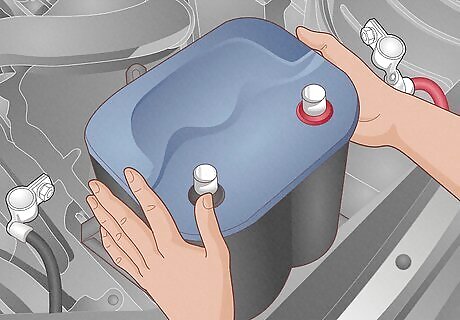
Replace your battery if it’s dead, old, leaking, corroded, or swollen. To replace the battery yourself, turn off your car and open the hood. Use a wrench to disconnect the negative (black) cable from its terminal, followed by the positive (red) cable. Pull the old battery out, then place the new battery in the same orientation that the old battery was in. Reattach the black cable to the negative terminal and the red cable to the positive terminal, then start your car. If your battery is held in place by a metal bar, use a wrench to unscrew the nuts or bolts attaching the battery to the bar, then remove the battery. Place the new battery in position and screw it in place using the same nuts or bolts. Wear rubber gloves and safety glasses when handling the battery. If it’s leaking fluid, use acid-resistant gloves to prevent burns from sulfuric acid. If your car won’t start, tighten or reconnect the battery cables and try again. If it still won’t start, have a mechanic check the alternator and wiring. Ask a mechanic to replace your battery if you don’t feel comfortable doing it yourself. Note the manufacturing date on your new battery. Have the battery checked 3-4 years after this date to ensure it’s still working correctly.
Maintaining Your Car’s Battery
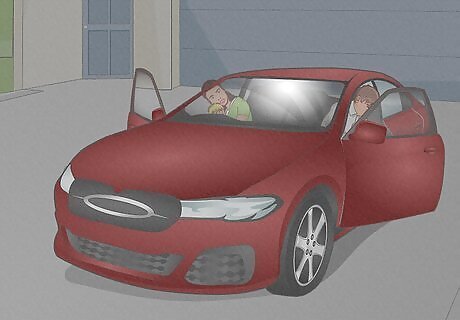
Turn off your lights and electronics whenever you park your car. Leaving your lights on overnight is an easy mistake to make. But it can drain your battery and requires a jump to fix. Avoid this scenario by double-checking that your headlights, dome light, radio, and other electronics are turned off whenever you get out of the car. Inspect your headlights closely when parking during daylight hours. Headlights are hard to see in full sunlight. Avoid leaving chargers and other items plugged into your car’s dashboard. These may draw power even when your car is off.

Wrap the battery in a battery blanket to protect it from the cold. A battery blanket is a heated electric blanket that wraps around your car’s battery. It plugs into an electrical outlet in your garage or outdoor driveway. Whenever temperatures drop below 20°F (-6.7°C), open your car’s hood, plug the battery blanket into an outlet, and wrap it around the sides of the battery case to keep the battery warm. Keeping the battery warm during the winter will help it last longer. If you can’t wrap the blanket around the battery case due to lack of room or engine components being in the way, drape it over the top of the battery. If possible, park your car in a warmed garage and keep the temperature above 20°F (-6.7°C). This eliminates the need for a battery blanket.

Get your battery and electronics maintained regularly. Have a mechanic inspect your car’s battery, alternator, wiring, and electronics during your annual maintenance appointments. Let them know if you’ve been having trouble starting your car or noticed any problems with the electronics, like dim headlights. Ask if the battery is still working properly and how much longer it will last before it needs to be replaced. Ask if your alternator is working correctly. If it needs maintenance or replacement, have it fixed as soon as possible.














Comments
0 comment